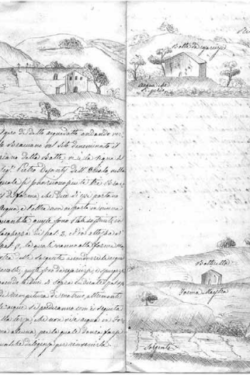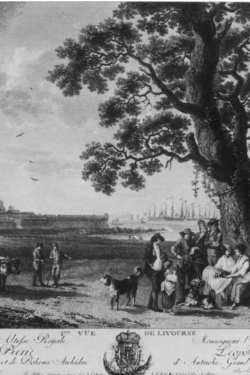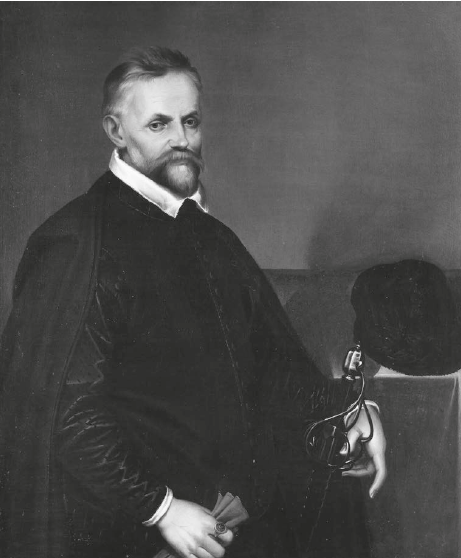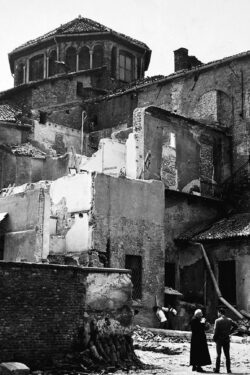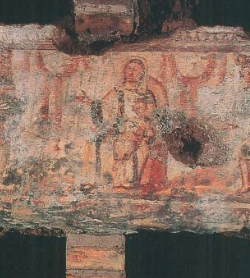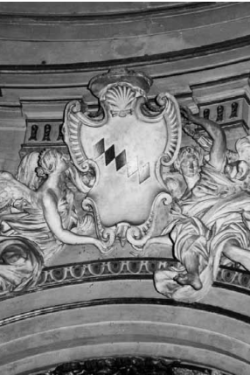Descrizione
Storia dell’arte 17, Gennaio – Marzo 1973
Maria Gabriella Gargano
Carlo De Dominicis
This essay is the result of a research that has allowed the author to reconstruct the personality of the Roman architect Carlo de Dominicis, active in the eighteenth century but until now completely unknown and forgotten. The finding of his birth certificate and his will as well as of numerous accounting documents, which speak of de Dominicis’ professional activity, allow us to place him within a precise historical framework. De Dominicis, born in Rome in 1696 and died there in 1758, was the son of a master mason; his personality reveals his youthful artistic formation under his father’s wing, and the writings that during his early period Borromini himself was publishing.
De Dominicis, born in Rome in 1696 and died there in 1758, was the son of a master mason; his personality reveals his youthful artistic formation under his father’s wing, and the writings that during his early period Borromini himself was publishing. In addition, we can see the influence of works known to him in Rome and the close collaboration he had with Raguzzini. When he was twenty years old, he took part in a competition at the Academy of St. Luke, Rome. Using the typical artistic language of the eighteenth century, he designed the tomb of Cardinal Bichi for the church of S. Agata dei Goti. His first lone professional experience was in the church of SS. Bartolomeo e Alessandro dei Bergamaschi. Afterwards the church of SS. Celsio e Giuliano in Banchi gave him the possibility to express himself fully, and it was as well the culmination of his professional experience. Other projects followed: restoration in S. Salvatore delle Coppelle, in S. Orsola a Tor de’ Specchi, in the church of Bambin Gesk on the Esquiline hill, the planning of the transept of S. Maria in Via and of the chapel of S. Giuseppe in S. Francesco a Ripa. They all represent a significant points in the examination of this personality. The hypotheses that attribute to him the small church of Bambin Gesk at Sezze Romano, the town hall at Tor de’ Conti, and that in Piazza della Maddalena, aid in revealing other aspects of De Dominicis’ personality. De Dominicis can be seen as following in the artistic way of Borromini as well as absorbing ideas from Fontana, from Raguzzini, and from other contemporary architects, such as Valvassari, Michetti, De Sanctis, and Specchi. Throughout his works, the theme of a central axis following Borromini’s ideas is constant. A central plan is a recurrent idea in his plans. Even in works that he did not begin but which were already existing, he always tried to open up spaces and to e round out » the corners. Thus, the series of different projects for S. Bartolomeo dei Bergamaschi reveals his intention to realize a structure based on a central plan; unfortunately, this was not completed because of the adoption of a more modest plan that brought about only a reconstruction of the pre-existing organism. The outside is made to adapt to the plan and to the interior by completing a plastic A,moving » organism. The works of restoration on the facade of S. Salvatore delle Coppelle and of the church of Bambin Gesk at Sezze Romano represent on de Dominicis’ part the introduction of an architectural language different from his usual baroque vocabulary; they anticipate the by-then imminent neo-classicism. This article is an introduction to a larger work in which many documents found in the State Archives, Rome, in the Capitoline archives, and in the churches and confraternities where de Dominicis worked will be published in their entirety.

